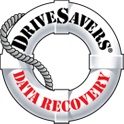DriveSavers Data Recovery (http://www.drivesaversdatarecovery.com/) has formed a dedicated research and development team to conquer the challenges of solid state drive (SSD) data recovery.
DriveSavers began working with solid state storage technology around 1995 when SmartMedia cards were introduced with some of the first consumer-priced digital cameras. Since then, the company has aggressively researched and developed unique techniques for SSD and NAND flash recoveries, as well as partnered with premier SSD manufacturers including Samsung and SandForce, says Chris Bross, Strategic Technical Alliance Engineer at DriveSavers.
Storage manufacturers currently use non-volatile flash memory for portable USB drives, camera cards, SSDs, Apple iPhones and iPads. One of the greatest benefits of flash memory is that it doesn’t require power to retain data it stores, unlike other types of memory chips such as DRAM or SRAM. Because SSDs have no moving parts, they eliminate common problems experienced with typical hard drives that employ flying read/write heads such as: head crashes; bad motors and damaged head stacks.
“As SSDs continue to grow in popularity and market share, everyone wants the speed and quick boot times, but have questions about reliability and trusting a new technology with their precious data,” says Chris Bross, Strategic Technical Alliance Engineer at DriveSavers. “Having years of experience in achieving early data recovery success with SSD technology, DriveSavers can provide a safety net should the unexpected SSD failure happen and data loss occurs.”
Nevertheless, for all that you gain from a SSD; data is still at risk. The technology is still relatively new and failures do occur. These devices are susceptible to problems such as bad chips, directory corruption, virus attacks, accidental file deletion, impact damage, electrical spikes and fire or water damage.
SSD data recovery can be challenging for a number of reasons. Data is stored across multiple memory chips, similar to the way data is striped across multiple hard drives in a RAID zero configuration. The SSD controller is the brain of the device and determines how and where the data is to be written on the flash media via complex proprietary algorithms. And many of these SSDs are self-encrypting as well.
“For a successful recovery to be achieved, we must understand the controller technology and be able to access all the NAND chips on the drive,” says Bross. “Some or all chips may be removed from the printed circuit board and make repairs as needed. One-of-a-kind solutions must often be developed quickly to satisfy our customer’s needs.”

